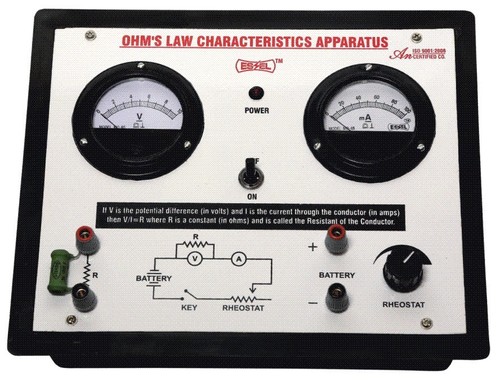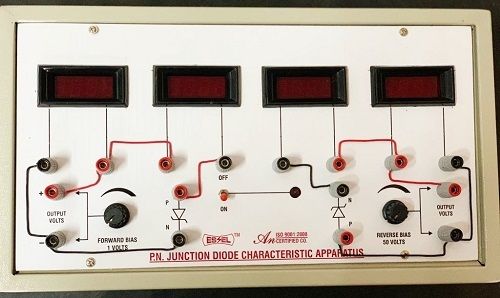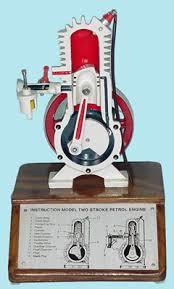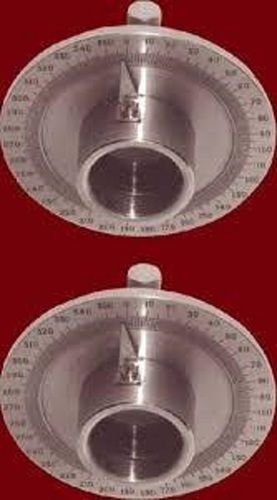Ohm's Law
Price 3850 INR/ Piece
Ohm's Law Specification
- Equipment Materials
- Iron & Bakelite
- Usage
- For Laboratory
- Capacity
- 1 Kg/hr
- Temperature Range
- 10-40 0C Celsius (oC)
- Display Type
- Analog
- Dimension (L*W*H)
- 11*9*5 Centimeter (cm)
- Weight
- 2000 Kilograms (kg)
Ohm's Law Trade Information
- Minimum Order Quantity
- 1 Piece
- FOB Port
- ambala cantt
- Payment Terms
- Cash in Advance (CID)
- Supply Ability
- 1 Piece Per Week
- Delivery Time
- 1 Days
- Sample Policy
- Sample costs shipping and taxes has to be paid by the buyer
- Packaging Details
- Each Piece
- Main Export Market(s)
- Africa, Asia, Central America, Eastern Europe, North America, Middle East, South America, Australia, Western Europe
- Main Domestic Market
- All India
- Certifications
- ISO 9001..2015/CE
About Ohm's Law
Instrument Comprises of two moving coil meters to measure voltage & current, one wire wound potentiometer, circuit diagram printed on the panel & connections brought out at terminals for connecting battery.
Robust Laboratory Solution
Built from a combination of iron and bakelite, this Ohms Law apparatus is engineered for reliable laboratory applications. Its sturdy construction supports a wide range of experiments and educational activities where precision and durability are paramount.
User-Friendly Analog Display
The analog meter allows for straightforward readings of voltage and current, making it easy for students and researchers to observe variations and establish electrical relationships. Its intuitive display simplifies the experimental process and minimizes interpretation errors.
Ideal for Varied Conditions
Operating within temperatures from 10C to 40C, this equipment performs consistently in diverse lab environments. Its resilience to ambient changes makes it a dependable tool for consistent and repeated experimentation.
FAQs of Ohms Law:
Q: How is the Ohms Law apparatus with iron and bakelite materials used in a laboratory setting?
A: The equipment is typically employed to demonstrate and validate Ohms Law by connecting it to a power source and measuring current and voltage changes. Its sturdy construction allows for repeated use in practical lab experiments by students and professionals.Q: What are the main benefits of choosing an analog display for Ohms Law experiments?
A: An analog display provides a clear visual representation of current and voltage shifts, facilitating immediate observation of results. This helps learners grasp the direct relationship between resistance, voltage, and current without the complexity of digital interfaces.Q: When should this apparatus be used within its temperature range for accurate results?
A: For optimal accuracy, use the apparatus in ambient conditions ranging from 10 to 40C, as specified. Staying within these limits ensures that neither the materials nor the measurements are affected by temperature-related fluctuations.Q: Where is this Ohms Law laboratory equipment manufactured and supplied from?
A: This laboratory apparatus is manufactured, supplied, and exported from India, offering reliable access to quality educational tools for institutions both domestically and internationally.Q: What is the process for setting up and operating the Ohms Law apparatus?
A: To operate, connect the device to your circuit, set up the experimental configuration as per standard Ohms Law procedures, then monitor the analog display to record current and voltage at varying resistances. Follow the user manual for precise setup steps.Q: What advantages do the iron and bakelite materials provide for this equipment?
A: Iron offers stability and strength, while bakelite provides electrical insulation and heat resistance. Together, these materials ensure the apparatus is safe, reliable, and long-lasting for repeated laboratory use.

Price:
- 50
- 100
- 200
- 250
- 500
- 1000+
More Products in Physics Lab Instruments Category
PN Junction Diode Characteristics Apparatus
Price 5200 INR / Piece
Minimum Order Quantity : 1 Piece
Weight : Approx. 3 Kg
Dimension (L*W*H) : 335 x 220 x 110 mm
Usage : Laboratory Teaching, PN Junction Diode Characterization
Equipment Materials : MS Powder Coated, Bakelite, PCBs
Two Stroke Petrol Engine Model
Price 8700 INR / Piece
Minimum Order Quantity : 1 Piece
Weight : Approximately 68 kg
Dimension (L*W*H) : 44 cm x 25 cm x 30 cm
Usage : Educational Demonstration, Laboratory Study
Equipment Materials : Aluminum, Steel, Acrylic Sections, PVC
Digital Visible Spectrophotometers
Price 35000 INR
Minimum Order Quantity : 1 Piece
Weight : 8.5 Kilograms (kg)
Dimension (L*W*H) : 340960 Nanometer (nm)
Usage : For Laboratory
Equipment Materials : Iron & Bakelite
POLARIZER AND ANALYZER (POLAROID)
Price 2200.00 INR / Piece
Minimum Order Quantity : 1 Piece
Weight : 500 Grams (g)
Dimension (L*W*H) : 10*4*3 Inch (in)
Usage : IN LABORATORY
Equipment Materials : BRASS
 |
ESEL INTERNATIONAL
All Rights Reserved.(Terms of Use) Developed and Managed by Infocom Network Private Limited. |

 Send Inquiry
Send Inquiry




